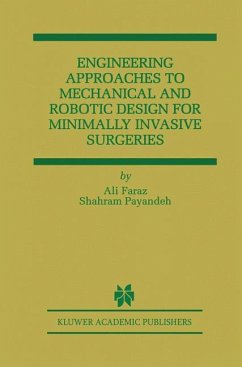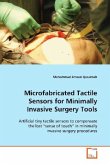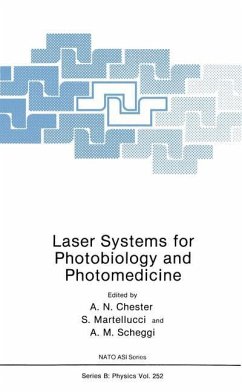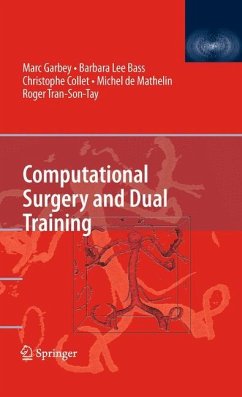This cross-disciplinary book investigates engineering principles in the design and development of mechanisms for surgery. The approaches are based on mechanical engineering design principles and electro-mechanical systems, including mechatronics. The approaches used in this book can be followed by any design engineer. It is also of interest to researchers and practitioners in fields such as biomedical engineering, medical device design, mechanical engineering, electrical kinesiology, and electro-mechanical engineering.
Among the book's contributions to the field:
- For those interested in robotics, a new application is presented;
- For those interested in minimally invasive surgery, a new approach to designing tools is introduced;
- For design engineers, the problems associated with MIS are formulated and addressed. The design constraints and objectives can be used by any other designer for further improvements or integration.
This book will be an essential reference for design engineers, mechanical and electrical engineers, biomedical engineers, and all those involved in the design and development of medical devices.
Within the past twenty years, the field of robotics has been finding many areas of applications ranging from space to underwater explo rations. One of these areas which is slowly gaining popularity among the users group is the notion of service robotics. This book is an in vestigation and exploration of engineering principles in the design and development of mechanisms and robotic devices that can be used in the field of surgery. Specifically the results of this book can be used for designing tools for class of Minimally Invasive Surgery (MIS). Generally, Minimal Invasive Surgery (MIS), e. g. laparoscopic surgery, is performed by using long surgical tools, that are inserted through small incisions at the ports of entry to the body (e. g. abdominal wall) for reaching the surgical site. The main drawback of current designs of en doscopic tools is that they are not able to extend all the movements and sensory capabilities of the surgeon's hand to the surgical site. By im proving surgical procedures, training, and more practice, it is possible for surgeons to reduce completion time for each task and increase their level of skill. However, even in the best cases the level of performance of a surgeon in Minimally Invasive Surgery is still a fraction of the con ventional surgery. Any dramatically improvement is usually driven by introduction of new tools or systems that in turn bring totally new pro cedures and set of skills.
Among the book's contributions to the field:
- For those interested in robotics, a new application is presented;
- For those interested in minimally invasive surgery, a new approach to designing tools is introduced;
- For design engineers, the problems associated with MIS are formulated and addressed. The design constraints and objectives can be used by any other designer for further improvements or integration.
This book will be an essential reference for design engineers, mechanical and electrical engineers, biomedical engineers, and all those involved in the design and development of medical devices.
Within the past twenty years, the field of robotics has been finding many areas of applications ranging from space to underwater explo rations. One of these areas which is slowly gaining popularity among the users group is the notion of service robotics. This book is an in vestigation and exploration of engineering principles in the design and development of mechanisms and robotic devices that can be used in the field of surgery. Specifically the results of this book can be used for designing tools for class of Minimally Invasive Surgery (MIS). Generally, Minimal Invasive Surgery (MIS), e. g. laparoscopic surgery, is performed by using long surgical tools, that are inserted through small incisions at the ports of entry to the body (e. g. abdominal wall) for reaching the surgical site. The main drawback of current designs of en doscopic tools is that they are not able to extend all the movements and sensory capabilities of the surgeon's hand to the surgical site. By im proving surgical procedures, training, and more practice, it is possible for surgeons to reduce completion time for each task and increase their level of skill. However, even in the best cases the level of performance of a surgeon in Minimally Invasive Surgery is still a fraction of the con ventional surgery. Any dramatically improvement is usually driven by introduction of new tools or systems that in turn bring totally new pro cedures and set of skills.








